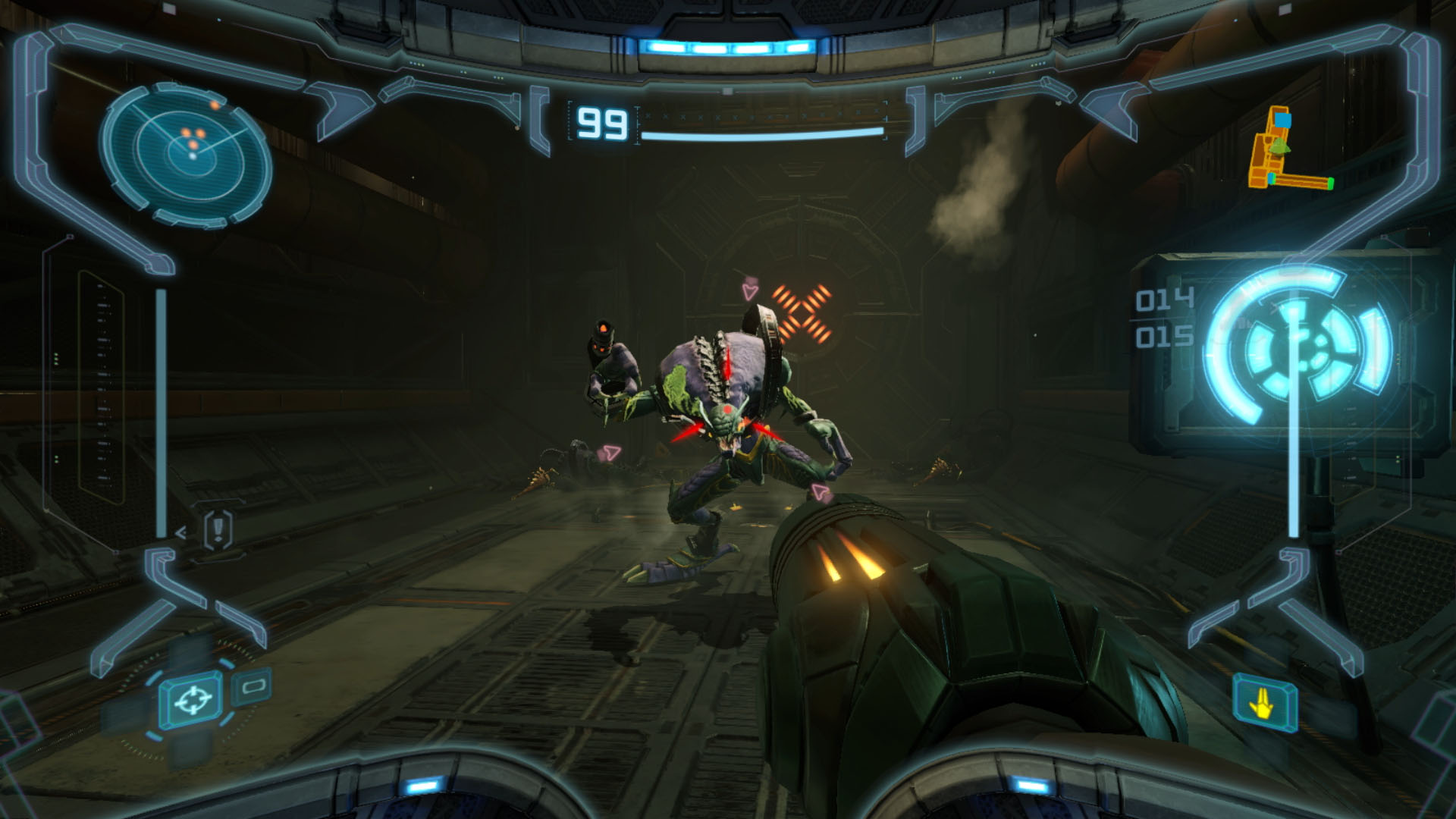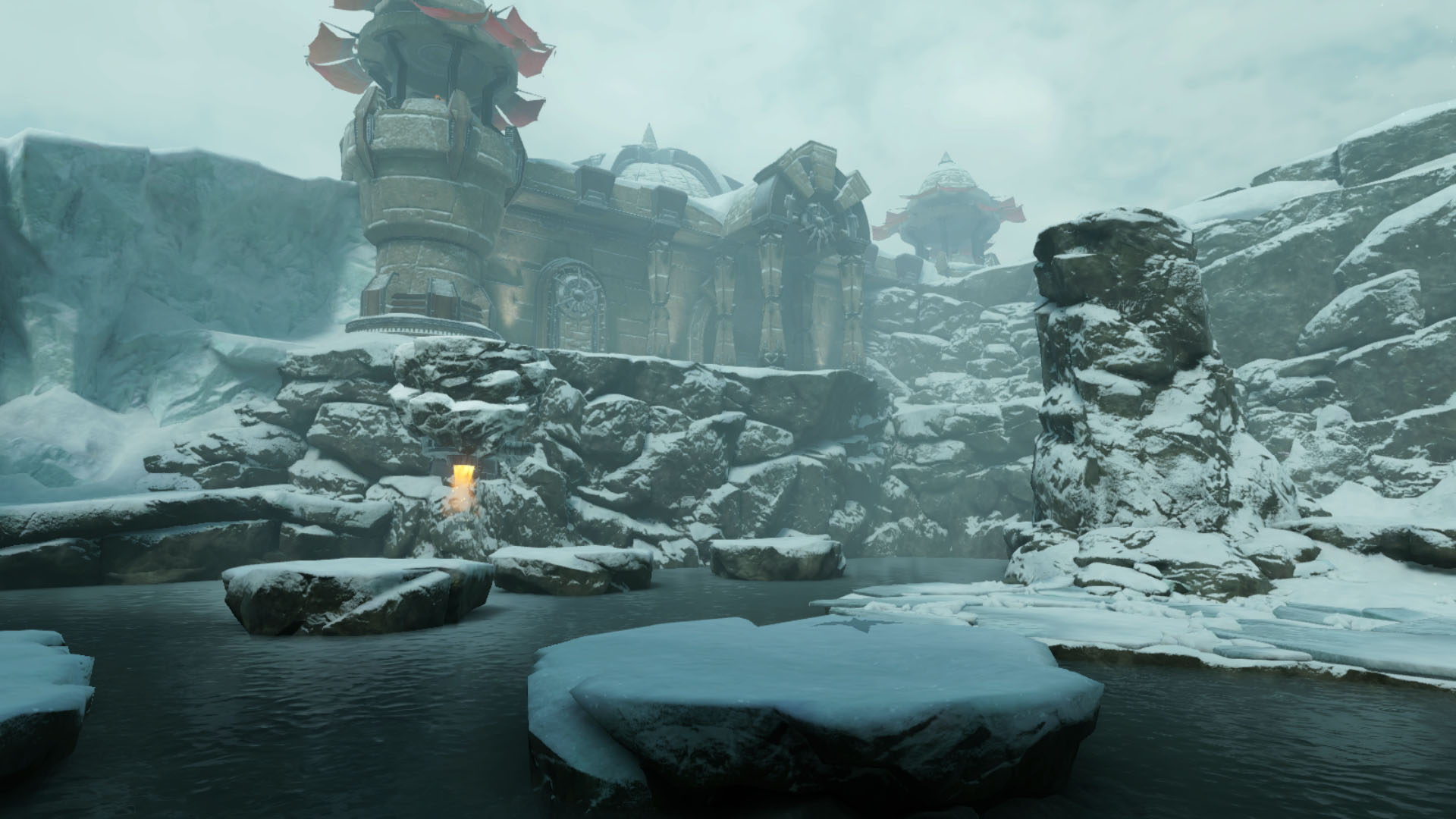A quick forward before I begin. I’ve been playing video games for a long time since I about was 6 years old. What I haven’t been doing for a long time is playing games well. I used to kinda… vibe with whatever I was playing. Pop in the original Zelda, mill around a little, not really know how to save my game or progress, and quit. Then do it again. And again. And again.
I was dumb — kids are dumb. Metroid Prime came out when I was in second grade, and I played the demo on some promotional disc or something. Around this time, I think I was enjoying the likes of Sonic Adventure 2, so the “Citizen Kane of video games” was bound to go over my head. Shooting stuff was cool, I thought, but that escape timer was scary, and I didn’t understand what all this scanning stuff is about. And so my window closed, and I was left without the experience of one of gaming’s crown jewels. Until now.
First, I want to remark on how insanely good Metroid Prime Remastered looks, regardless of whether you’re playing in docked or handheld mode. It all runs at a rock-solid 60 frames per second, and the graphics are so readable and sleek it’s like looking into one of those GameCube-era prerendered magazine foldouts. “It’s how you remember it looking,” blah blah blah. But it actually sorta is.
The design philosophy of the Prime games is really in a class of its own. I can’t think of another game I’d call a “first-person shooter adventure.” The spaces you explore are tight, nearly to the point of claustrophobia, but so well crafted that they breathe with life. Movement is slow, as is the act of looking around (though this is somewhat mitigated by the new dual-stick controls). This leads to an almost meditative state as you’ll enter a new area, dispatch enemies, and trundle around with a narrow field of view obscured further by an impressively detailed HUD.

It might sound unpleasant when described like that, but it’s quite the opposite. This methodical approach to design and movement gives Metroid Prime the same qualities as a really good old-school point-and-click adventure. Swapping visors to find secrets or scanning all the pieces of lore in a given location can take a while, but it never feels like time wasted. The world of Tallon IV is meant to be scraped clean of its secrets, one upgrade at a time.
Combat is as simple as it ever was, with a generous lock-on system, turning what would normally be a traditional shooter into more of a dance with your foes. Dashing side to side and using the best weapon combination for each makes quick work of things — the combat was never meant to be challenging outside of boss fights, after all. Director Mark Pacini remarked that the challenge of the game was “finding your way around.” Unlike other games in the series, however, I never felt totally stumped on where to go next. Well-placed hints and thoughtfully crafted lead-backs after key powerups always steer the player in more or less the right direction.
Everyone’s favorite aspect of “Metroidvanias” is seeing a blocked path, a locked door, or an impassable… passage and thinking, “Gotta remember to come back here later.” Metroid Prime, with all of its first-person explorative wonder, captures this essence to the utmost degree. I don’t know if it’s the quality of the 3D map or the fact that you navigate the environment from Samus’ point of view, but breaching the unknown with a new ability feels just as fresh at the end of the game as it does towards the beginning. Zones are laid out sensibly — they aren’t too big and have plenty of shortcuts between them, so even getting lost and needing to backtrack never felt like too much of a chore.

Bosses are, as per series standard, a huge highlight. These capstone encounters aren’t particularly challenging most of the time, but their comparatively grandiose scale makes each of them much more impactful. I think I remember being (understandably) terrified of the Parasite Queen — who serves as an intro boss of sorts — as a young, dumb child. These monstrosities give weight to the Chozo lore and the mysteries surrounding Tallon IV — their ecology morphed not only by the mysterious and toxic Phazon but by the treacherous Space Pirates that have come to harvest it.
It’s easy to forget just how mature and complex Metroid’s lore can be, and I was heavily invested in the ancient Chozo scrawlings which spoke of a great poison and their quest to prepare tools for a “chosen one” (Samus) in a ritual to contain it. It’s sort of funny, giving a diegetic reason for all these bizarre powerups being scattered all over the place. “Yeah,” I can imagine them saying, “then she’ll find the Wave Beam and open that one door in the Magma Pool.” It’s very charming.
I think of Metroid Prime as the absolute shining example of this kind of thing. Every decision is downright inspired, from the way the Morph Ball switches things over to a third-person platformer, to the way Samus’ visor reacts to environmental hazards. Each facet of both game design and art direction harmonizes so elegantly that it’s sort of easy to take for granted in 2023. Or, it would be, if we got more games of this ilk. There’s no better encapsulation of the standalone adventure game of the GameCube era, and if you’re like me and haven’t gotten around to it, now you have no excuse. I might have been a little too dumb and impatient for Metroid Prime in its heyday, but when it comes to the game’s quality, time stood still.
This review is based on the Nintendo Switch version of the game. A code was provided for review by Nintendo.
Top Honors
Metroid Prime Remastered is a few things, but above all else, it's a timeless masterpiece. It's also the best-looking game on the Switch to date and the birth of an entirely self-contained genre of first-person adventure games. Having missed my chance to play it as a child, I'm humbled by its grand designs, and I'm convinced this remaster will turn many would-be fans into true believers.
Metroid Prime Remastered
